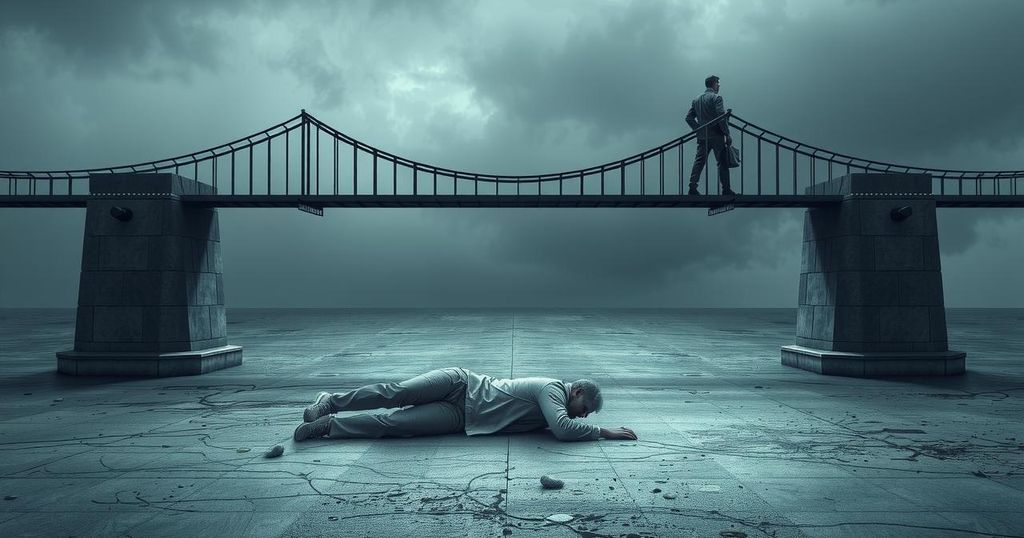Cyril Ramaphosa Reflects on His Unusual Meeting with Donald Trump
South Africa’s President Cyril Ramaphosa humorously described his strange encounter with Donald Trump at the White House, which included allegations of ‘white genocide’ and a misleading video presentation. The meeting sparked laughter and surprise, particularly when Trump requested the lights be dimmed. Media outlets criticized Trump’s presentation of unsubstantiated claims, reinforcing concerns around the misrepresentation of racial issues.
In a recent address during the Sustainable Infrastructure Development Symposium in Cape Town, South African President Cyril Ramaphosa humorously recounted his peculiar meeting with former U.S. President Donald Trump. He noted, with a chuckle, that as the lights dimmed in the room, he was reminded of a similar setup during his Oval Office encounter, leading him to wonder, “What is this? It’s happening to me again.” The crowd reacted with laughter at his anecdote, highlighting the odd atmosphere of their previous meeting.
The encounter between the two leaders took place at the White House last week and took an unexpected turn reminiscent of a previous contentious meeting between Trump and Ukrainian President Volodymyr Zelensky. During their discussions, Trump presented a video claiming to illustrate the burial grounds of white farmers supposedly killed by Black South Africans in land disputes. Ramaphosa shared his surprise as the former president asked to dim the lights, abruptly shifting the tone of their exchange.
During the meeting, Trump accused the South African government, which is predominantly Black-led, of engaging in a so-called “white genocide” against local farmers—claims that have been widely discredited by fact-checkers. Notably, the footage Trump displayed did not correspond to actual sites where white farmers had been buried, but rather showed temporary memorial crosses for a couple tragically killed in 2020.
White House Press Secretary Karoline Leavitt addressed the video’s content, indicating that it depicted crosses representing victims of racial persecution in South Africa, but she sidestepped the issue of Trump’s specific claims about “burial sites.” The press reports also emphasize how this interaction closely mirrored Trump’s earlier behavior with Zelensky in which he publicly criticized Ukraine’s leader.
Ramaphosa remarked on the awkwardness of the situation, reflecting on how others had described it as an “ambush” and expressing his bemusement at the unexpected turn of events. South African media, particularly the Sunday Times, criticized Trump’s approach in this meeting, characterizing it as an attempt to mislead and surprise Ramaphosa with unfounded allegations.
In addition to the unsettling video, Trump brandished a printout from American Thinker as purported evidence of the purported plight of white farmers in South Africa. However, the accompanying image, which depicted humanitarian workers with body bags, was actually recorded in the Congo, leading to further misrepresentation. Andrea Widburg, the managing editor of American Thinker, confirmed to Reuters that Trump had mistakenly identified the image used in the article, while the White House did not provide comments on this misidentification.
Overall, President Cyril Ramaphosa’s reflection on his strange encounter with Donald Trump highlights the absurd nature of their meeting, which brought up unfounded accusations and misleading representations of the situation in South Africa. The event raised concerns over the manipulation of tragic narratives and the susceptibility to sensational claims in political discourse. As scrutiny continues regarding Trump’s assertions, this incident serves as a reminder of the complexities and sensitivities surrounding discussions on race and violence.
Original Source: www.thedailybeast.com




Post Comment